History: Bermuda As An Aviation Outpost In WWII
[Part three of a series by Eric T. Wiberg]
During World War II there were thousands of reconnaissance and other flights flown out of Naval Operating Base [NOB] and Naval Air Station [NAS] Bermuda – mostly from Kindley Field. Many of them were amphibious flying boats and almost all were flown by the US Navy.
The war diary for Patrol Bombing Squadron VP 105 notes that “Operating conditions in the area were extremely favorable and permitted all crews excellent opportunity for training in their new type aircraft. The morale of all personnel was high and living conditions were good. Manifold recreational facilities were available to all, including golf, tennis, sailing, swimming, and fishing, plus the additional luxury of an ideal climate.
Operations during the squadrons’ stay at Bermuda consisted of offensive anti-submarine sweeps and long-range patrols covering up to 2,400 miles per trip.” Though it would be impossible to list all activities of the various squadrons based in Bermuda during the war, certain individuals can be highlighted for their attacks on U-boats and rescue of Allied survivors from the seas.
On the 7th of March 1942 150 miles south of Bermuda German submarine U-128 under Ulrich Heyse dived when two PBM Mariner flying boats [USN VP-74] appeared from low cloud. The first aircraft released two depth charges set for 50 feet just as the U-boat’s stern disappeared, but they were duds. A second pair of depth charges was then dropped, followed by two more from the other aircraft. U-128 escaped undamaged and remained submerged until dusk. [Source: Uboat.net and Office of Naval Intelligence/ONI].
Lt. Winslow Lockwood Pettingell [courtesy of Harvard University’s Pusey Library]:
On the 7th of April 1942 U-571 under Helmut Möhlmann had just sunk the Norwegian tanker M/T Koll when it was surprised on the surface and attacked unsuccessfully over a period of hours by three US Navy aircraft. One was piloted by Lieutenant [Lt.] Commander John W. Gannon, another by Lt. William W. Soverell, and a third by Lt. A. E. Carlson.
On the 28th of January 1942 Lt. Commander William A. Thorn of VP 74 was thanked by the master of the ship British Corporal for helping to ward off an attack by U-66 under Richard Zapp which was foiled by the appearance of aircraft. On the 3rd of June, in the midst of an effort to rescue men from the sunken merchant ship Westmoreland, Ensign John H. Cushman’s aircraft crashed at sea, most likely due to a sudden downdraft causing the aircraft to “catch a wing tip” on a wave.
The entire crew of P-6, VP 74, perished, and an exhaustive but futile search was instituted. The following day Lt. Winslow Lockwood Pettingell, a recent Harvard graduate and track star there, daringly landed on the water to rescue nine of the most gravely injured survivors of USS Gannet, a navy ship which had been sunk the day before by Gerhard Feiler in U-653 [the Gannet’s escort, HMS Sumar, had abandoned her].
He was followed by Lt. Cdr. Gannon who rescued another batch of survivors despite the rough seas, only to lose one of them on the flight back to Bermuda.
Among other aviators who landed at sea to rescue survivors off Bermuda were First Lt. Rex Knorr and his co-pilot Lt. M. Kaufman, who landed on the waves on the 9th of May to rescue survivors of the Melbourne Star, which had been sunk five weeks before by Hans-Ludwig Witt in U-129.
Aerial view of the conning tower of U-158 in its final seconds of existence [photo courtesy uboatarchive.net]:
There were only four survivors of a total complement of 119 persons. On 23 April 1942 an unknown pilot from Bermuda rescued eight survivors of the Derryheen southwest of Bermuda and took them back to the island. In order to land on the water the pilot had to jettison two depth charges.
On return to the boat it was too rough to land. The ship had been sunk 22nd April by U-201 under Adalbert Schnee. Over a week later 16 other survivors of the same ship were identified by Ensign K. R. Peachee out of Banana River NAS in Florida. On the 27th of June 1942 Lt. Junior Grade D. D. Durant landed on the water to rescue an injured sailor from a convoy passing north of Bermuda.
Joseph Abraham Jaap also daringly landed on the North Atlantic on the 11th of February to rescue survivors of the San Arcadio, sunk 31 January by U-107 under Harald Gelhaus. This feat of airmanship was memorialized by a painting commissioned by Life Magazine artist Floyd Davis, who was based in Bermuda for a year.
There were numerous attacks on submarines, two of them successful. Lt. George Koch attacked an unknown submarine on the 15th of April. On the 8th of July 1942 Lt. John Hitchcock attacked U-134 under Hans-Günther Brosin, and though neither aircraft nor sub was mortally damaged, the airplane limped back to Bermuda with bullet holes in its propeller and fuselage.
When the Halcyon was sunk by U-109 under Heinrich Bleichrodt north of Bermuda on 6th February 1942 the PBM Mariner aircraft P-12 of squadron VP 74 flew to the rescue and vectored the merchant ship British Prestige to pick up survivors. On 3rd July 1942 Lt.
“Rescue off Bermuda,” a painting by Floyd Davis, depicts Lt. J. A. Jaap’s rescue of San Arcadio survivors on February 11, 1942:
Junior Grade George W. Brown attacked a U-boat twice unsuccessfully – possibly U-134 under Brosin. Two days later Lt. jg John R. Steetle of the US Naval Reserve sighted what may have been U-159 under Helmut Freidrich Witte south of Bermuda and north of Puerto Rico and attacked. On his way back to base Steetle encountered U-527 under Herbert Uhlig but, since he had spent his bombs on the first attack, had nothing with which to damage the submarine.
The two successful attacks on submarines resulted in the sinking of U-158 under Erwin Rostin and U-84 under Horst Uphoff. Lt. Richard E. Schreder was led to the location of U-158 on the 30th of June 1942 by signals intelligence, which was impressively accurate.
Rostin on U-158 was in the habit of punctually informing headquarters of his impressive tally of ships sunk. Right on schedule he began transmitting northwest of Bermuda and Schreder dove in from behind the clouds for a kill. At first it seemed the depth charges did no damage, however one of them lodged in the casing, or deck of the U-boat, so that when the boat crash-dived, the pressure ignited the bomb at the designated depth and the detonation destroyed it.
The below illustration shows the officers “sunbathing” on the conning tower – this might have included the neutral Spanish skipper of the ship Everalda which Rostin had sunk days before.
A small vessel ferrying survivors of the San Arcadio from Jaap’s plane in Bermuda [photo courtesy researcheratlarge.blogspot.com]:
Whilst Schreder was awarded the Naval Air Medal and his fellow officers Ensign Jack “Jocko” Gierisch and Radioman Wrencie Vickers were also so honored, the next pilot to sink a sub in the region received no accolades for it. He was Lt. Thomas Rudolph Evert and on the 7th August 1943 he and his crewmates attacked a German submarine south of Bermuda, however they were denied credit and Evert perished in a training exercise in the Bay of Biscay months later.
Here is a detailed account of the attack by renowned U-boat historian Dr. Axel Niestlé:
“A Liberator B-4 of VB-105 USN, operating from Bermuda, sighted a surfaced U-boat steering a course of 90° true, identified as a probable 500 tons Type VII boat, at 1045 in position 27°55n/68°30w. The aircraft attacked it in the face of heavy anti-aircraft fire with a stick of four Mk47 depth charges, reporting a straddle with at least two charges exploding on the starboard side and one on the port side.
“The fourth charge probably became a dud due to technical failure of the arming wire. The U-boat attacked continued in a tight turn to the left for the next 16 minutes, exchanging gun-fire with the circling aircraft. Then the boat started to dive, whereupon the aircraft dropped a Mk 24 Mine 100 feet forward of the swirl just as the top of the conning tower went under.”
Lt. Thomas Rudolph Evert, who sank U-84 in August 1943 but received no credit [photo courtesy author’s collection]:
“Due to reduced visibility owing to a rainsquall no direct results were observed but about twenty minutes later a narrow oil slick extending crosswind for about ¾ of a mile was observed close to the diving position. Several other similar streaks appeared within the next three hours while the aircraft circled the location of attack.
“The attack was later classified as “U-boat present and probably damaged”.” This author has met with Lt. Evert’s son, US Representative Tom Petri, and will begin a long effort to bring proper credit to his father.”
This article is dedicated to the memory of Capt. Warren A. Brown, Sr., who immeasurably helped the author’s sailing career.
- Eric T. Wiberg is an author, historian, and researcher who has published nine books under four titles. His work can be followed on his personal website and on his U-Boats Bermuda blog.

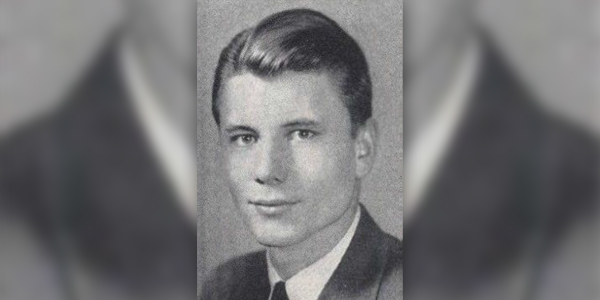
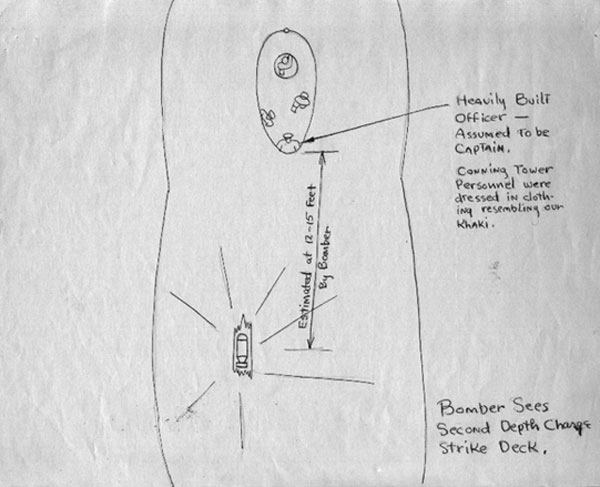
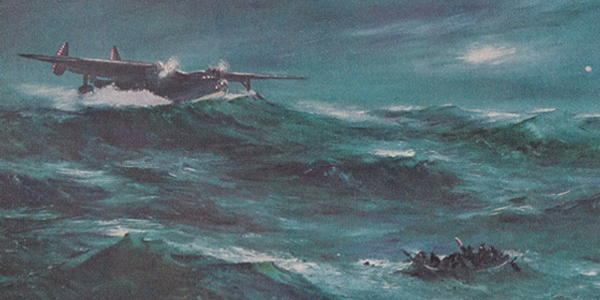
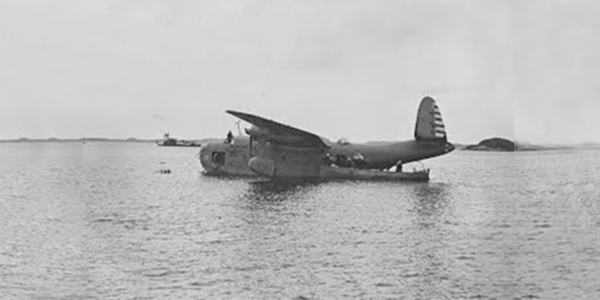
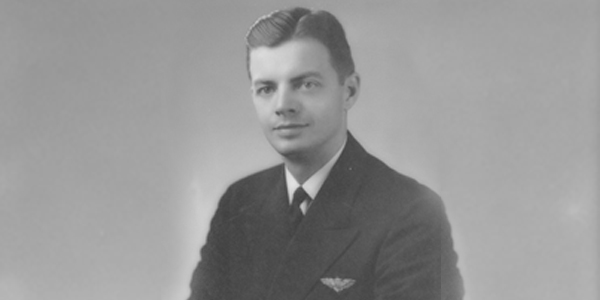

Awesome articles by the way, I’m looking forward to reading them all. More in future please.
Would like more info about wartime activity from Banana River NAS, also, there is little or no information about the roll LTA played in the anti-sub patrols… the Smithsonian tape covering Karl Donitz’s subs/wolf pack action in the St. Lawrence, North and Central Atlantic said nothing about LTA actions…I have copies of LTA operations and loses from Maine all the way down the American East coast, the Gulf of Mexico and North and East Coast of South America…we had LTA at Banana River…can’t recall the OS2U squadron that replaced the PBM’s but there is no mention of their contribution…fascinated by your writing, especially the ID of the U-boat Captains, names, and numbers…great detail…Respectfully, G. Doughty, USNR Air, ’43-’46, Banana River and Lakehurst.
Enjoyed your article……I was stationed at Kindley 1954-57. Used togo with a girl N. King……….Saw her and son and son’s family in 87…..Enjoyed remembering her father (South Court Ave) talked about the German Uboat capture…………Rc………….